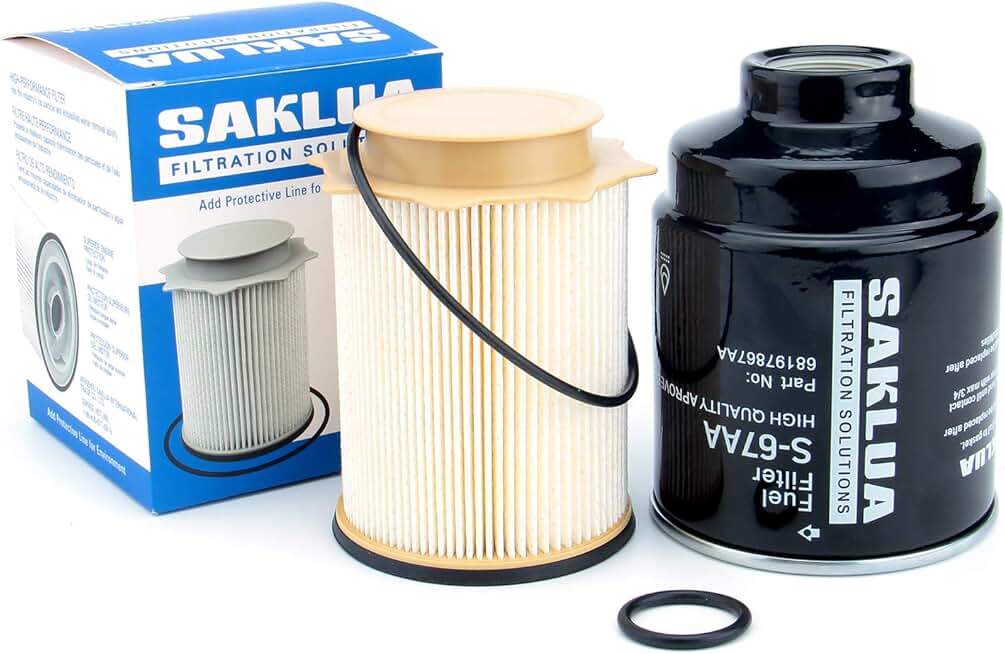The Closed Crankcase Ventilation (CCV) filter on your 6.7L Cummins diesel engine is a small but critical component that plays a huge role in the engine’s long-term health and performance. Its primary job is to separate oil mist and contaminants from the “blow-by” gases created during combustion before those gases are routed back into the engine’s air intake. A properly functioning CCV filter prevents oily residue from fouling up your turbocharger, intercooler, and other emission control parts. When it comes to choosing the “Best CCV Filter 6.7 Cummins , most drivers focus on reliable OEM replacements and high-efficiency aftermarket alternatives.
Understanding the 6.7 Cummins CCV System
The 6.7L Cummins engine utilizes a closed-loop CCV system to comply with strict emissions regulations. As the engine runs, some combustion gases inevitably leak past the piston rings into the crankcase—this is known as blow-by. These gases are laden with oil vapor and soot.
- Function: The CCV system routes these blow-by gases to a specialized filter located on the valve cover, beneath the plastic engine cover.
- Filtration: The filter acts as a coalescing device, trapping the oil mist and contaminants.
- Recirculation: Cleaned gases are then rerouted back into the intake system, where they are consumed by the engine, while the trapped oil is drained back into the crankcase.
If this filter becomes clogged, crankcase pressure builds up. This can lead to blown gaskets and seals, oil leaks, and most importantly, excessive oil getting pushed into the turbo and intake, forming a harmful, sticky sludge that degrades performance and can lead to expensive repairs.
Top CCV Filter Options for Optimal Performance
For the 6.7 Cummins, the most reliable and recommended option remains the original equipment manufacturer (OEM) part. However, several other reputable brands offer reliable filters that meet or exceed OEM specifications.
The OEM/Fleetguard Solution
The gold standard for the 6.7 Cummins CCV filter is the Fleetguard CV52001 (or its Mopar equivalent, which is manufactured by Cummins Filtration/Fleetguard).
- Brand Authority: Fleetguard is the filtration division of Cummins, meaning this filter is specifically engineered by the engine manufacturer to meet the flow and filtration demands of the 6.7L engine.
- Reliability: Choosing the OEM part ensures an exact fit and guaranteed performance for emissions compliance and engine protection. It’s the safest choice for drivers who want to maintain their truck’s factory design and warranty.
- Service Life: This filter is designed for a long service interval, typically between 50,000 to 67,500 miles, though this can vary based on model year and service conditions (heavy towing, excessive idling, etc.).
Reputable Aftermarket Alternatives
While the OEM filter is the benchmark, other quality brands offer direct-fit replacements that are popular with owners. The key is ensuring the chosen filter is a high-quality coalescing type that maintains the correct crankcase pressure.
- WIX Filters: Known for high-quality filtration across the automotive market, WIX offers a reliable CCV filter replacement that is cross-referenced to the OEM part number. This is often a go-to for mechanics looking for a trusted alternative at a competitive price.
- Doc’s Diesel: Several specialized diesel parts suppliers offer their own high-efficiency filters designed specifically for the 6.7L Cummins. These often advertise superior oil separation efficiency to keep the intake system even cleaner than stock. Look for brands with a strong reputation in the Cummins community.
Importance of Timely CCV Filter Replacement
Regardless of which filter you choose, its performance is directly tied to the replacement interval. Neglecting this crucial maintenance item will inevitably lead to problems.
- Reduced Engine Performance: A clogged CCV filter causes positive crankcase pressure to increase, which can impede piston movement, leading to power loss, worse fuel economy, and a rough idle.
- Contamination and Sludge: High pressure forces more oil vapor through the filter media, saturating it and ultimately pushing unfiltered oil mist into the intake tract. This oily residue combines with soot from the Exhaust Gas Recirculation (EGR) system to create a thick, tar-like sludge that coats the intake manifold, turbo compressor wheel, and intercooler, severely restricting airflow.
- Code Warnings: Newer 6.7 Cummins models can set a Diagnostic Trouble Code (DTC) such as P1507 or P1508 if the filter restriction is too high, signaling that service is required.
Recommendation: Always adhere to your owner’s manual for the specific replacement interval, typically between 50,000 to 67,500 miles. However, those who tow heavily, idle frequently, or run modified engines may benefit from a more aggressive replacement schedule, such as every 30,000 miles.
The Alternative: CCV Reroute or Catch Can
Some 6.7 Cummins owners, particularly those who have performed other emissions system modifications (which may not be street legal in all areas), opt for a CCV Reroute Kit or a Catch Can System.
- CCV Reroute: This modification bypasses the factory filtration system, redirecting the blow-by gases (oil mist and vapors) to vent either directly into the atmosphere or into a specialized catch can.
- Catch Can System: A catch can is installed inline with the rerouted hose to trap the oil droplets and condensation before the remaining gases are vented or recirculated. This modification is designed to ensure zero oil enters the intake, keeping the entire charge air system immaculate.
While a catch can or reroute eliminates the need for filter replacement, it’s vital to know that venting to the atmosphere is not emissions-legal for on-road use in many regions, and a catch can requires periodic draining and maintenance. For most street-driven and emissions-compliant trucks, sticking to a high-quality OEM-spec filter and following the proper service interval remains the best and simplest path to engine longevity. More info
